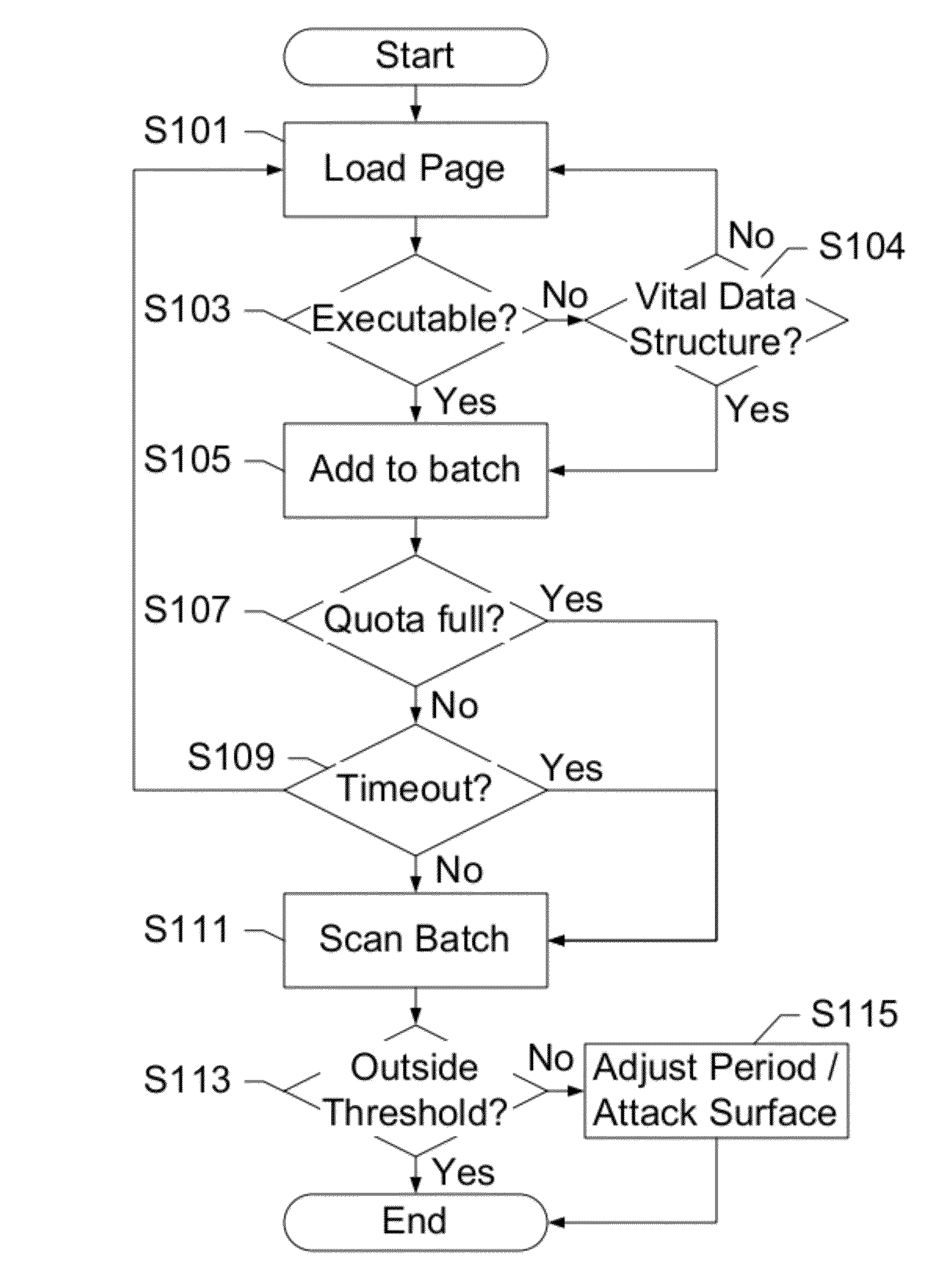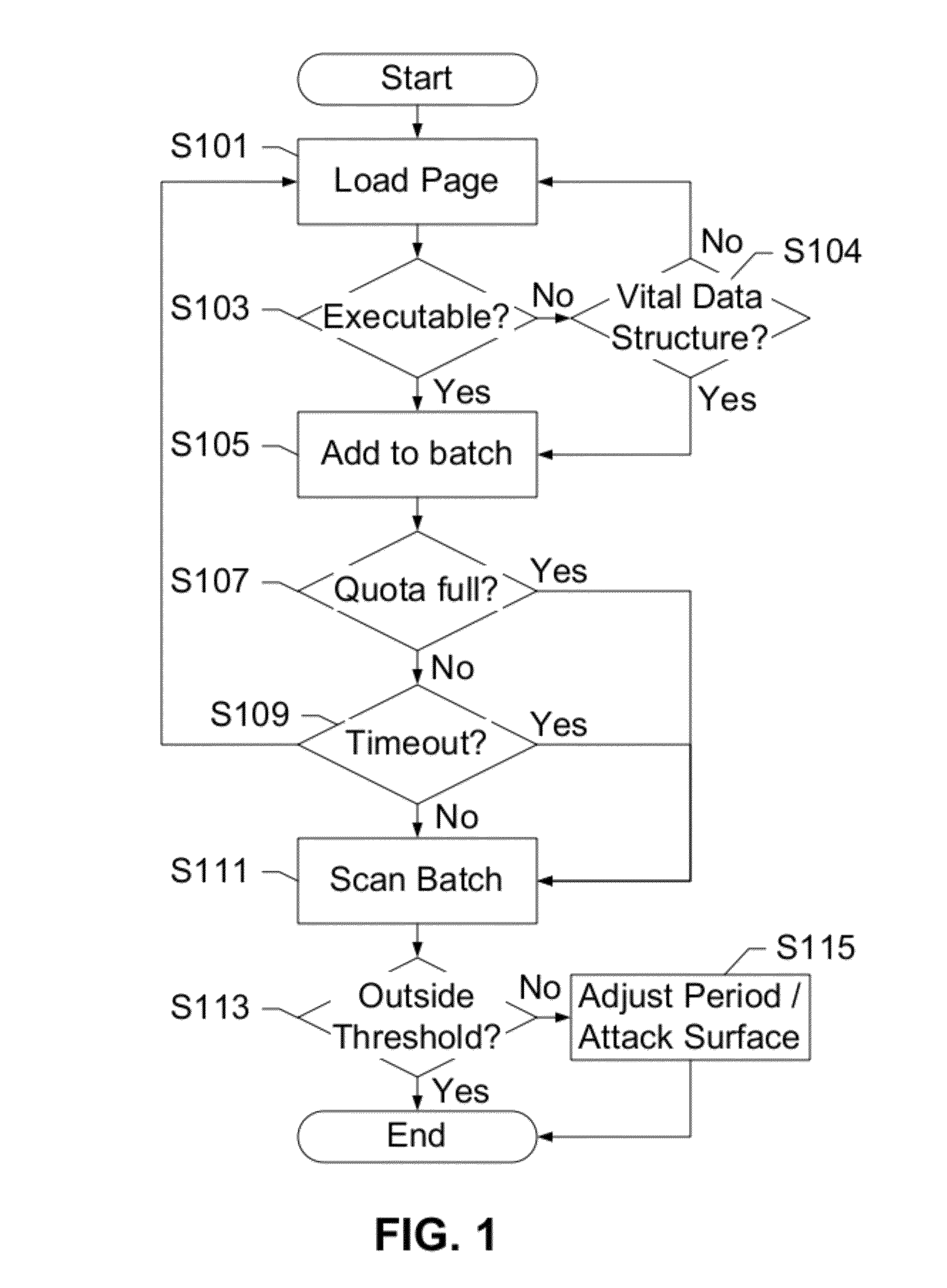Balancing malware rootkit detection with power consumption on mobile devices
a malware rootkit and power consumption technology, applied in the direction of unauthorized memory use protection, instruments, high-level techniques, etc., can solve the problems of increasing the problem of malicious software, malware, crippling or even completely disabling an electronic device, and the benefits of computing power and networking in a small package also come the costs
- Summary
- Abstract
- Description
- Claims
- Application Information
AI Technical Summary
Benefits of technology
Problems solved by technology
Method used
Image
Examples
Embodiment Construction
[0032]The subject disclosure presents a novel technique for balancing the tradeoff between security monitoring and energy consumption on mobile devices. Security / energy tradeoffs for host-based detectors focusing on rootkits are analyzed along two axes: a scanning frequency, and a surface of attack. Experimental results are applied to a hypervisor-based framework, and a sweet spot is identified to minimize both energy consumption and a window of vulnerability for critical operating system objects such as code pages and kernel data.
[0033]“Mobile device”, as used herein and throughout this disclosure, refers to any electronic device capable of wirelessly sending and receiving data. A mobile device may have a processor, a memory, a transceiver, an input, and an output. Examples of such devices include cellular telephones, personal digital assistants (PDAs), portable computers, etc. The memory stores applications, software, or logic. Examples of processors are computer processors (proce...
PUM
 Login to View More
Login to View More Abstract
Description
Claims
Application Information
 Login to View More
Login to View More - R&D
- Intellectual Property
- Life Sciences
- Materials
- Tech Scout
- Unparalleled Data Quality
- Higher Quality Content
- 60% Fewer Hallucinations
Browse by: Latest US Patents, China's latest patents, Technical Efficacy Thesaurus, Application Domain, Technology Topic, Popular Technical Reports.
© 2025 PatSnap. All rights reserved.Legal|Privacy policy|Modern Slavery Act Transparency Statement|Sitemap|About US| Contact US: help@patsnap.com



